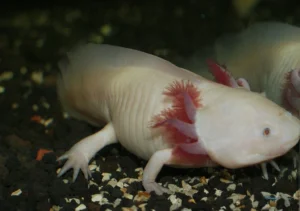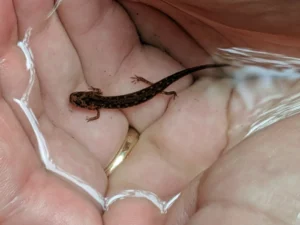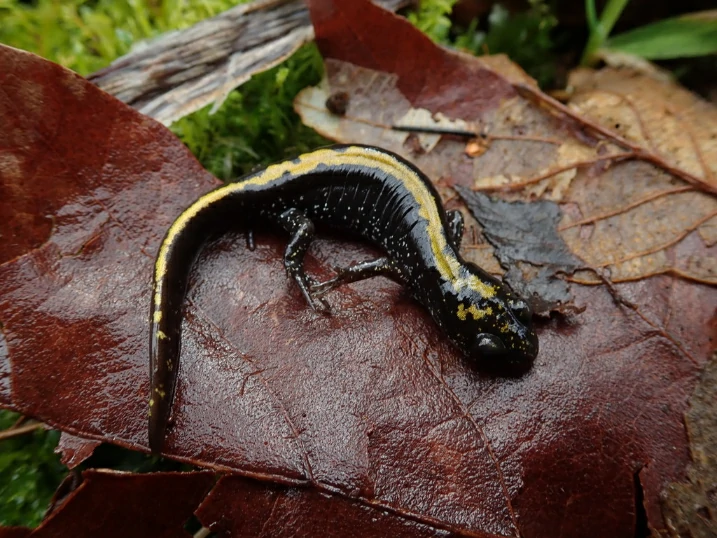Salamanders are secretive amphibians that have fascinated scientists, nature lovers, and anyone lucky enough to spot one in the wild. Their strange looks, quiet movements, and unusual abilities set them apart from most other animals. So, what makes salamanders so special?
Salamanders are special because they can regrow body parts, live in many different habitats, go through unique life cycles, and play key roles in ecosystems. These traits make them some of the most fascinating amphibians on Earth.
Salamanders Can Regrow Body Parts
One of the most amazing things salamanders can do is grow back lost body parts. Very few animals can do this, which is why scientists study them so closely.
If a salamander loses a leg, tail, or even parts of its eye or heart, it can regrow the missing part completely. The new limb has bones, muscles, nerves, blood vessels, and skin, just like the original.

This comes in handy when escaping predators. A salamander can drop its tail, get away, and grow the tail back later.
The process starts when special cells gather at the wound and form what’s called a blastema. These cells multiply and turn into the tissues needed to rebuild the lost body part.
Since this takes a lot of energy, salamanders often slow down or eat less while healing. Still, it’s an incredible survival skill that gives them an edge in the wild.
Scientists hope that by studying salamander regeneration, they can someday apply the same process to help humans heal from serious injuries.
Salamanders Have Complex Life Cycles
Salamanders go through several life stages, and the pattern depends on the species.
Most start life as larvae in water, breathing through gills. Over time, many metamorphose, growing lungs and legs to live on land.

But not all salamanders leave the water. Some stay aquatic for life, keeping their gills. This condition is called neoteny. It’s common in species that live in stable lakes or ponds.
Some species even have flexible life cycles. If their pond dries up, they may metamorphose early and move to land. If the water stays safe, they can remain aquatic.
This flexibility allows salamanders to live in many different environments and adapt when conditions change.
Salamanders Live in Many Habitats
Salamanders are found almost everywhere except Australia and Antarctica. They live in damp forests, freshwater streams, caves, and even deserts.
Most need moisture to survive. Their skin helps them breathe and absorb water, so they usually live in damp places under rocks, logs, or leaves.
Some are fully aquatic and spend their whole lives in water. Others live mostly on land but return to water to breed.
Cave-dwelling salamanders adapt to life in darkness, often losing their pigment and even their eyesight. Desert species survive by hiding underground during dry periods and only coming out when it rains.
Their ability to live in so many different places shows how tough and adaptable they are.
Salamanders Help Keep Ecosystems Balanced
Salamanders are more than just unusual animals. They play big roles in their environments.
As hunters, they help control bug populations, eating worms, slugs, and insects. As prey, they feed birds, snakes, fish, frogs, and mammals. This puts them right in the middle of the food web.

Because their skin easily absorbs chemicals, salamanders are also very sensitive to pollution. Scientists often use them to measure the health of forests and freshwater systems.
By feeding, moving, and producing waste, salamanders also help recycle nutrients back into the soil and water. This benefits plants and other animals around them.
Salamanders Look Different from Frogs and Toads
Even though salamanders, frogs, and toads are all amphibians, salamanders look and behave very differently.
They usually have smooth, damp skin, long bodies, and tails. Their short legs help them crawl through water or dense plants. Many species have webbed toes for swimming.
Some salamanders can even change their skin color to match their surroundings. Others, especially cave-dwellers, have poor eyesight or no eyes at all.
These physical traits help salamanders survive in the wide range of places they call home.
Salamanders Have Interesting Behaviors
Salamanders show many survival tricks.
Most are nocturnal, coming out at night when it’s cooler and more humid. This keeps them from drying out and helps them avoid predators.

They also use chemical signals (scents in the environment) to mark territory, find mates, or warn rivals.
Males often put on mating displays, like dances or posture rituals, to attract females. Some salamanders even guard their eggs, keeping them safe until they hatch.
Even though salamanders seem quiet and secretive, their behavior is surprisingly complex.
Salamanders Contribute to Science
Salamanders are not only fascinating animals, they also help scientists learn more about biology and medicine.
Their ability to regrow organs and limbs could one day be the key to better healing in humans. Their skin produces natural chemicals that fight bacteria and fungi; possible leads for new medicines.
Because they are sensitive to toxins, salamanders also help researchers track the effects of pollution and climate change.
These traits make them valuable far beyond the forests and ponds where they live.
Conclusion
Salamanders are special for many reasons. They can regrow lost body parts, adapt to many habitats, live through unique life cycles, and keep ecosystems balanced.
They are more than just unusual creatures, they are key to nature and important to science.
Learning about salamanders helps us appreciate their place in the world and reminds us why protecting them matters.
Hi, my name is Ezra Mushala, i have been interested animals all my life. I am the main author and editor here at snakeinformer.com.

